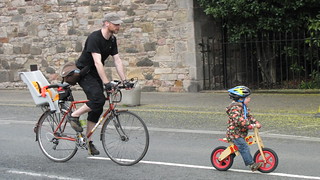There's an element of circularity in road design. The design of the road is a key part of 'explaining' to drivers how they should behave. Wide, two lanes, sweeping curves, long sight lines = fast and most drivers will drive quickly on them. Narrow, windy, houses, schools, pedestrians, parked cars and junctions = slow. Road design involves creating roads that will achieve the desired speed from most drivers most of the time. The 85th percentile speed should be a design element rather than something that spontaneously arises from drivers. If most drivers are ignoring a speed limit it means that the road isn't explaining itself properly. You can try enforcement but really you'd be better redesigning it and creating features bring speed down to what you want.
There's nothing magical about the 85th percentile. It's not the safest in any absolute sense but if it is the speed at which most drivers drive setting that as the limit will tend to minimise speed differentials. In free-flowing traffic most drivers will drive at the norm speed. If you try to impose a low speed limit on a road that describes itself as faster you'll have greater speed differences even if most people comply. You'll have more people driving by the road - speeding.
Now, you could argue that those speeding drivers should simply accept the decision made by those people in authority who "know better" and have selected the speed limit. It's a good moral or ethical position but not a practical one and it's oddly deferential. It neglects the reality that people will routinely ignore rules that are troublesome or illogical, particularly when nothing bad happens as a consequence and that's the reality for almost all speeding drivers almost all of the time. Their normal experience of speeding is that nothing happens so there's no reason not to.
This all assumes that most drivers aren't sociopathic, which I don't think they are. But some of them are. The type of people who overstate their own abilities, consider themselves more able and more important than people around them and who feel that rules they find inconvenient should be changed. If a speed limit was set by the 85th percentile, they'd be in the 15% that would exceed it. They already judge themselves to be better than the herd who are obeying the limit. The commenter PetrolHead guy (or whatever he calls himself) should be read like he's a sociopath.

 posts
posts
